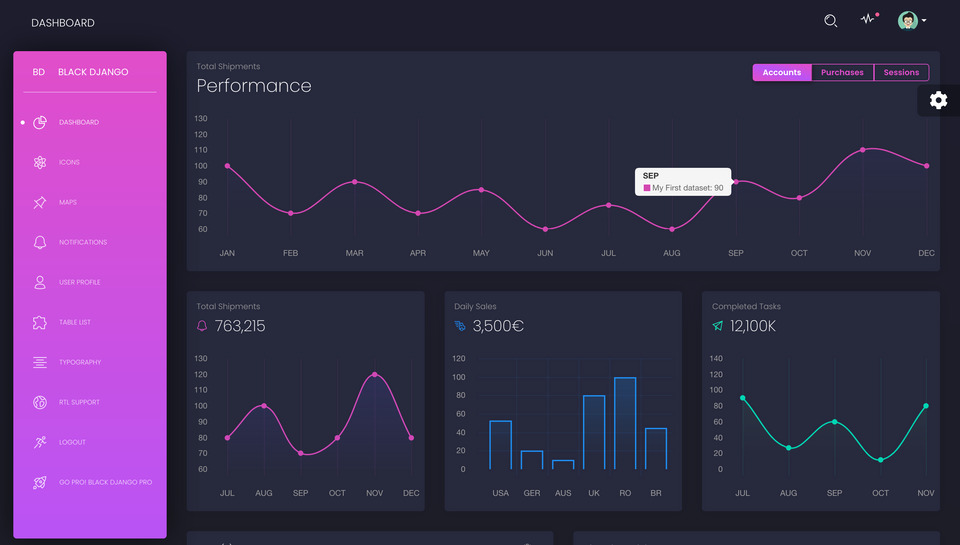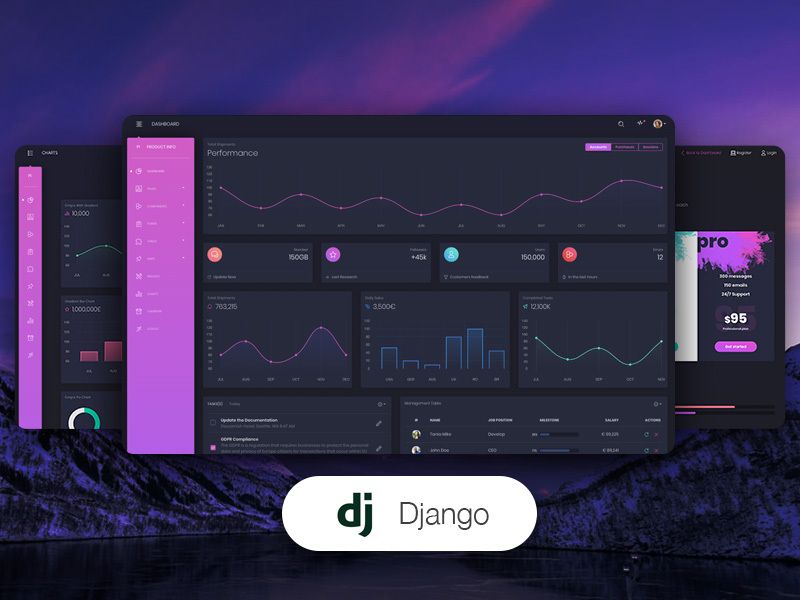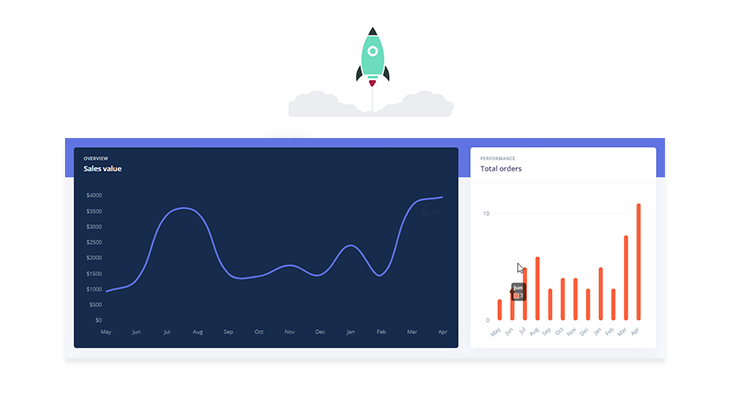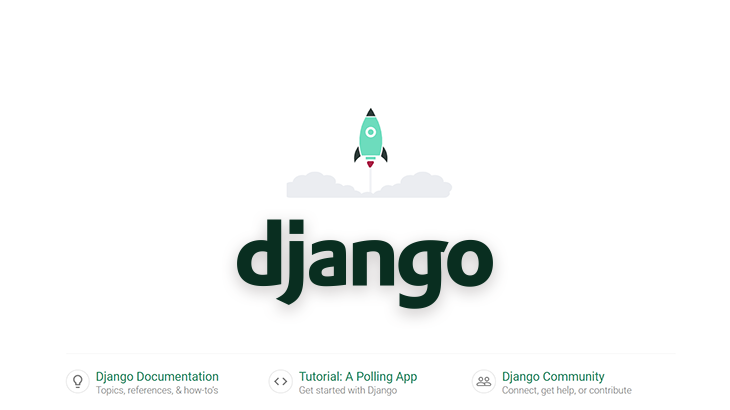Starting with Aug.2020, our products portfolio has a new member: Django Templates, a new bundle of products built and actively supported in partnership with AppSeed App Generator. This article presents the first one released under the MIT License using our Black Dashboard design (free version). The product is provided with basic modules like authentication, database, simple/modular codebase and deployment scripts for Docker, and Nginx/Gunicorn stack.
Thanks for reading! TL;DR;
- Black Dashboard Django – product page (contains DEMO & sources)

What is Django
Django is a high-level Python web framework built by experienced developers that enables a rapid development of secure and maintainable websites. The project is actively supported and versioned by an impressive open-source community. Using this amazing framework, we can build from simple, one-page websites to complex eCommerce solutions, API servers, or microservices.
Mature Framework
With the first release in September 2008, Django was improved constantly since then. Django follows the “Batteries included” philosophy and provides almost everything developers might want to do “out of the box”. Because everything you need is part of the one “product”, it all works seamlessly together, follows consistent design principles, and has extensive and up-to-date documentation.
Versatile and Modular
Django being a complete framework, can be used to code super simple, one-page websites and, at the same time, complex eCommerce platforms, API servers, or microservices. Django provides choices for almost any functionality you might need in your project (e.g., several popular databases, templating engines, etc.); it can also be extended to use other components if needed.
Security
A super-important aspect of any project is covered nicely by Django by providing built-in protections for many security threats. Django provides a secure way to manage user accounts and passwords. It avoids common mistakes like putting session information in cookies where it is vulnerable (instead of cookies just contain a key, and the actual data is stored in the database) or directly storing passwords rather than a password hash. For more information related to this amazing framework, feel free to access the official Django links:
- Django – Official Website
- Django Documentation – a must-read resource for any Django developer
Black Dashboard Design
Black Dashboard is a beautiful Bootstrap 4 Admin Dashboard with a huge number of components built to fit together and look amazing. If you are looking for a tool to manage and visualize data about your business, this dashboard is the thing for you. It combines colors that are easy on the eye, spacious cards, beautiful typography, and graphics.

Black Dashboard comes packed with all plugins that you might need inside a project and documentation on how to get started. It is light and easy to use and also very powerful.
Black Dashboard features over 16 individual components, giving you the freedom of choosing and combining. This means that there are thousands of possible combinations. All components can take variations in color, that you can easily modify using SASS files. You will save a lot of time going from prototyping to full-functional code because all elements are implemented.
Product features
The codebase is provided with a simple, unopinionated structure quite easy to extend by any developer with basic Django knowledge. Product features aim to help the developer start a new Django project faster and skip over the common modules and features that are usually present in common Django applications.
- UI-Ready,
SQLite Database, Django Native ORM Modular design, clean codebase- Session-Based Authentication,
Forms validation - Deployment scripts:
Docker, Gunicorn / Nginx
How to use the code
To compile and successfully start the app locally, Python3 should be installed on the workstation. If you are not sure if Python is properly installed, please open a terminal and type python –version. To successfully compile the project a minimal programming kit should be properly installed and accessible in the terminal:
Python3– the programming language used to code the appGIT– used to clone the source code from the Github repository- Basic
development tools(g++ compiler, python development libraries, etc) used byPythonto compile the app dependencies in your environment.
Build instructions are fully documented in the official product documentation and also in the README file, provided along with the source code. In case we’ve missed something, feel free to open a new issue using the Github issues tracker.
If all goes well and the app starts, we should see some beautiful dark-themed pages provided by the Black Dashboard UI, served by our Django template project.
Step #1 - Download the sources from the product page
$ unzip black-dashboard-django.zip
$ cd black-dashboard-djangoStep #2 - Install Modules (dependencies)
$ virtualenv env
$ source env/bin/activate
$
$ # Install modules - SQLite Storage
$ pip3 install -r requirements.txtStep #3 - Setup Database & Create tables
$ python manage.py makemigrations
$ python manage.py migrateStep #4 - Start the project
$ # Start the application (development mode)
$ python manage.py runserver # default port 8000Once all the above commands are executed, we should be able to visit the app in the browser and interact with the UI by creating users an authenticate.

Django Template Black - RTL Support

Thank you for reading! For more resources, please access:
- A curated index with more Django Templates provided by Creative-Tim
- More Django Dashboards provided by App Generator





